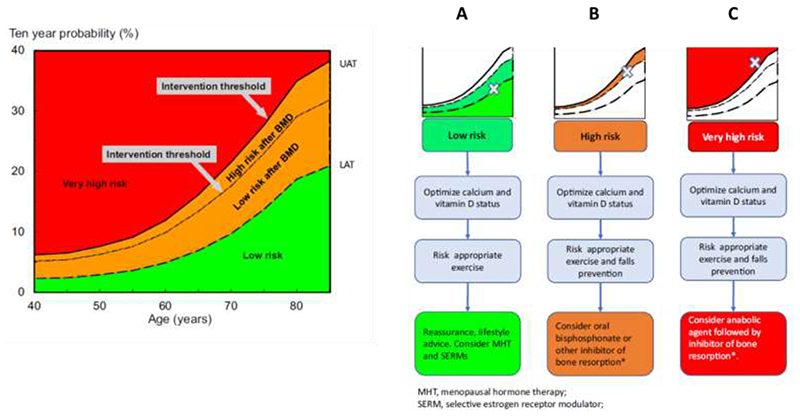Figure 3.
Personalisation of antiosteoporosis treatment according to baseline fracture risk. Initial risk assessment is performed using FRAX with clinical risk factors alone. FRAX probability in the red zone indicates very high risk, in which pathway C may be appropriate (anabolic agent followed by an inhibitor of bone resorption). FRAX probability in the green zone suggests low risk, in which pathway A should be followed, with advice to be given on lifestyle, calcium and vitamin D nutrition and menopausal hormonal treatment considered. FRAX probability in the orange zone (intermediate, between the upper assessment threshold, UAT, and lower assessment threshold, LAT) should be followed by BMD assessment and recalculation of FRAX probability including femoral neck BMD. After recalculation, risk may therefore be in the red zone (very high risk), orange zone (high risk, pathway B, which suggests initial antiresorptive therapy), reproduced with permission from (96).

